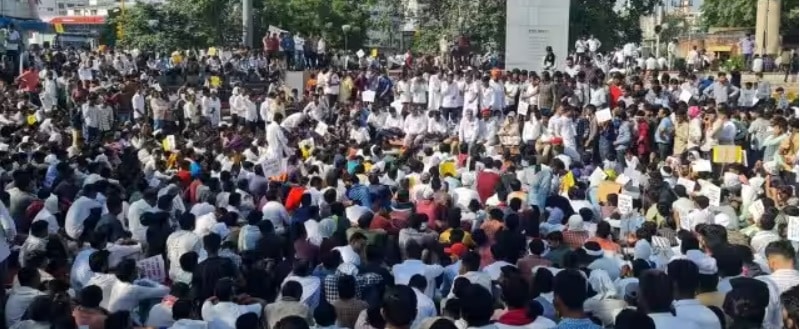What’s in today’s article?
- Why in News?
- Historical Background on OBC Reservations
- Indra Sawhney vs Union of India Case Judgement
- About Justice Rohini Commission
- Significance of the Rohini Commission’s Findings
Why in News?
- The Justice G. Rohini Commission on the sub-categorization of Other Backward Classes groups, constituted in October 2017, submitted its long-awaited report to the President of India on July 31.
- The committee had received 14 extensions in the last six years.
Historical Background on OBC Reservations
- In 1979, the Second Backward Classes Commission (Mandal Commission) was set up to determine the criteria for defining the socially and educationally backward classes.
- The Mandal report (1980) identified 52% of the population at that time as “Socially and Economically Backward Classes” (SEBCs) and recommended 27% reservation for SEBCs in addition to the previously existing 22.5% reservation for SC/STs.
- In 1990, the then Union Government implemented the recommendations of the Mandal Commission, and provided for reservations for Other Backward Classes (OBCs) in government jobs.
- Accordingly, OBCs would get 27% reservation in jobs in central government services and public sector units.
- Following severe opposition, the issue of OBC reservation reached the Supreme Court in 1992.
Indra Sawhney vs Union of India Case Judgement
- A nine-judge bench issued a verdict with 6:3 majority in 1992.
- The majority opinion said the Union Government’s orders mandating 27% reservation for backward castes were valid and that the reservation was made not just on the basis of caste, even if it appears so, but on the basis of objective evaluation of social and educational backwardness of classes.
- The landmark judgement set two important precedents –
- Economic backwardness alone could not be a criterion to qualify for reservation.
- The total number of reserved seats/places/positions cannot exceed 50% of what is available.
About Justice Rohini Commission
- The President had formed the Commission headed by former Delhi High Court Chief Justice G. Rohini in October 2017.
- Objective –
- To examine the question of sub-categorizing the over 2,600 caste groups listed in the Central OBC list.
- In the notification announcing its formation, the Commission was tasked with first examining how much of 27% reservation (jobs and education) and other government benefits meant for OBCs was dominated by which caste groups.
- Further, the Commission went on to explore ways of sub-categorizing these existing OBC groups in order to make sure benefits can be redistributed equitably.
- This involved breaking up all OBC caste groups into further categories based on how dominant the communities have been in availing government benefits meant for OBCs.
- Subsequently, the Commission proceeded to work out a formula for breaking up the caste groups in a way that would make the highest share of the 27% reservation pie available to the groups that have historically been crowded out of them.
- The least share of the pie going to caste groups that have so far dominated this sphere.
- In addition to this, the Commission was also tasked with rationalizing the Central OBC list by suggesting corrections and replacements in spellings, which will result in minor changes to the entries.
- The Commission’s report has now been submitted to the President.
Significance of the Rohini Commission’s Findings
- The Commission had arrived at the conclusion that a small number of caste groups among all OBC groups, were dominating reservation and other government benefits.
- The report’s findings will for the first time show the changes, if any, in the socio-economic status of OBC communities that have historically been able to avail benefits.
- This is significant in light of the fact that the clamor for a caste census is growing louder among the Opposition and several State governments.
- Further, the granularity of the data, as envisioned in the Rohini Commission’s report, will inevitably have a direct effect on the electoral mathematics of political parties, where communities that have been dominating benefits are also politically dominant.
Q1) When was the term ‘Creamy Layer’ defined?
The Supreme Court of India defined the “creamy layer”, quoting an Indian government office memorandum dated 8 September 1993. The term was originally introduced in the context of reservation of jobs for certain groups in the Indra Sawhney & Others v. Union of India case in 1992.
Q2) What percentage of the population in India is OBC?
Between 2019 and 2021, Other Backward Class (OBC) constituted the largest part of Indian households accounting for about 42 percent.
Source: Explained | Why are Justice Rohini panel’s findings important?
Last updated on June, 2025
→ UPSC Notification 2025 was released on 22nd January 2025.
→ UPSC Prelims Result 2025 is out now for the CSE held on 25 May 2025.
→ UPSC Prelims Question Paper 2025 and Unofficial Prelims Answer Key 2025 are available now.
→ UPSC Calendar 2026 is released on 15th May, 2025.
→ The UPSC Vacancy 2025 were released 1129, out of which 979 were for UPSC CSE and remaining 150 are for UPSC IFoS.
→ UPSC Mains 2025 will be conducted on 22nd August 2025.
→ UPSC Prelims 2026 will be conducted on 24th May, 2026 & UPSC Mains 2026 will be conducted on 21st August 2026.
→ The UPSC Selection Process is of 3 stages-Prelims, Mains and Interview.
→ UPSC Result 2024 is released with latest UPSC Marksheet 2024. Check Now!
→ UPSC Toppers List 2024 is released now. Shakti Dubey is UPSC AIR 1 2024 Topper.
→ Also check Best IAS Coaching in Delhi
























